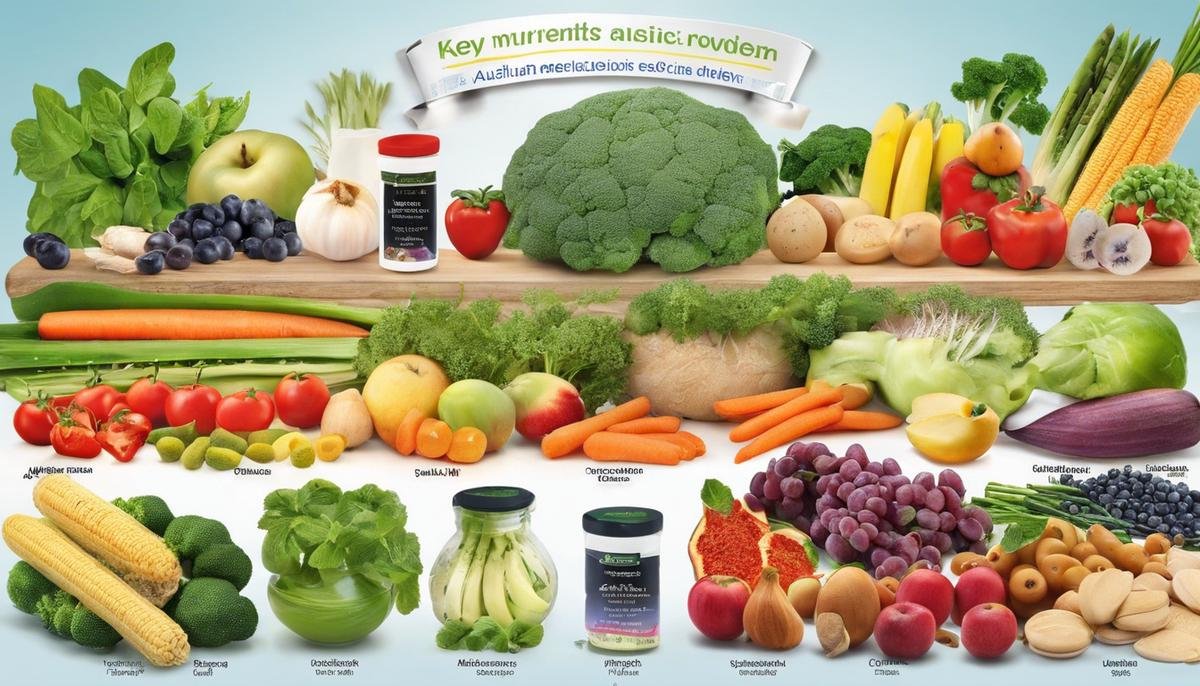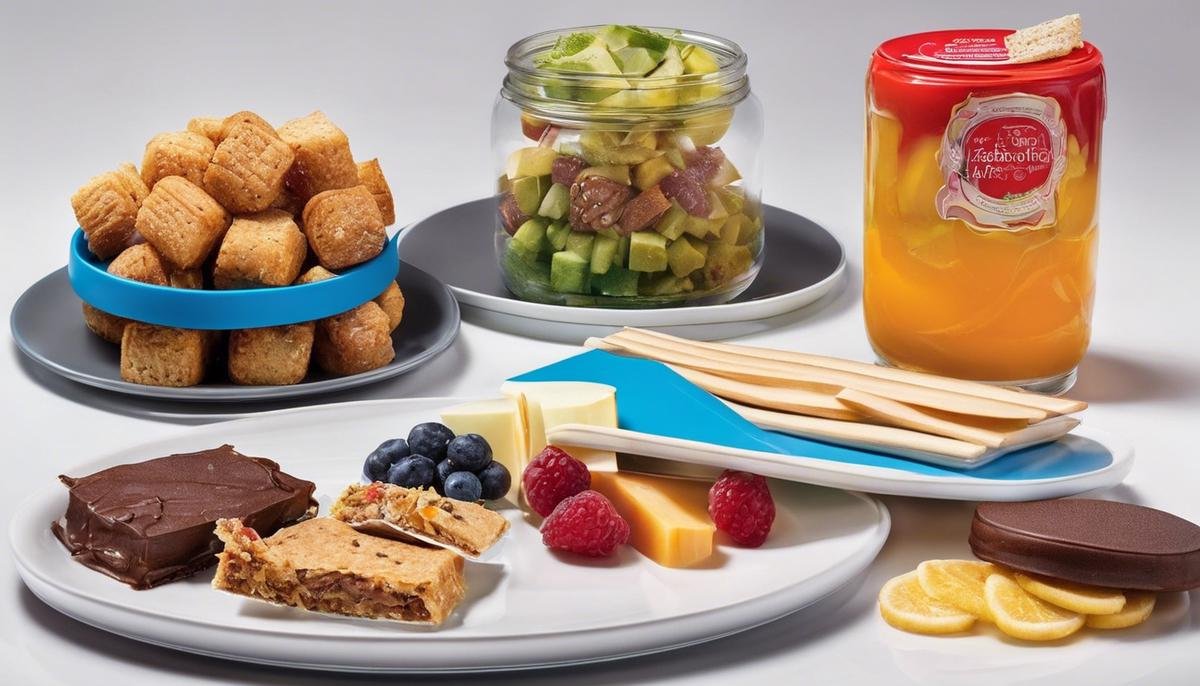
Navigating the complex world of nutrition can be especially challenging for families with Autistic children, as they often face unique dietary concerns. When it comes to understanding and meeting the dietary needs of these children, it’s crucial to recognize that they may require a tailored approach to eating. Whether grappling with food sensitivities, gastrointestinal disorders or the ways in which certain foods influence behavior and cognition, parents and caregivers have a critical role in crafting a balanced and individualized diet. This essay seeks to empower those responsible for the well-being of Autistic children with valuable insights into how to create a supportive and health-focused food environment, addressing not only the underlying nutritional needs but also the behavioral aspects of eating, including picky eating and sensory sensitivities.
Understanding the Dietary Needs of Autistic Children
Navigating the Nutritional Landscape for Autistic Children: Understanding Different Dietary Needs
When it comes to feeding our little ones, every parent wants to ensure they’re providing the right nutrients to help them thrive. But if your child is on the autism spectrum, you might have noticed that mealtime can come with its own set of challenges and differences. Understanding the unique dietary needs of autistic children can open doors to not only better health but also to smoother, happier meal times.
Firstly, it’s not uncommon for children on the spectrum to have particular food preferences or aversions. Texture, color, and smell might play a more significant role in what they are willing to eat. It’s more than just picky eating; it can be a sensory processing issue. So, embracing their preferences while making small, gradual changes can help expand their food repertoire.
Next on the plate is the topic of digestive troubles. Many autistic children experience gastrointestinal issues, such as constipation, diarrhea, or a sensitive gut. A diet that’s high in fiber and includes plenty of fluids can aid in making digestion more comfortable. For some, gluten-free or casein-free diets have been reported to alleviate symptoms, although these diets are not universally recommended and should be approached carefully and under the guidance of a dietitian or a doctor.
Another dietary detour may include the need for supplementation. Certain behavioral medications can affect appetite and the absorption of nutrients, so a multivitamin or specific nutrient supplement could be beneficial. However, it’s essential to tackle supplementation with the guidance of a healthcare professional, as each child’s needs can vary dramatically.
Furthermore, there’s a conversation around food additives and artificial ingredients. While the science isn’t settled, some parents have observed improvements in behavior when reducing or eliminating artificial colors, flavors, and preservatives from their child’s diet. It’s worth exploring and seeing if a more natural, less processed diet makes a difference.
Lastly, let’s not forget that mealtime is more than just food. It’s also a routine, a comfort, and sometimes, a roadblock. Creating a calming environment, establishing a predictable routine, and being patient can ease mealtime stress. Remember, small steps lead to big victories at the dinner table.
Every child is wonderfully unique, and what works for one may not work for another. Continuously exploring, adapting, and consulting with health professionals will light the way to a diet that suits your child’s individual needs. And remember, at the heart of this journey is a parent’s love and dedication, the mightiest of all ingredients in the recipe for a happy, healthy family.

Dealing with Picky Eating and Sensory Issues
One of the most effective strategies when dealing with picky eaters, particularly those with sensory concerns, is to introduce a little bit of fun and creativity into the mix. Consider turning mealtime into a kind of game where children feel they’re on an adventure. Remember, to a child, life is a playful journey.
When serving dishes, consider the presentation. Children feast with their eyes first, and a fun-looking meal could be more appealing. For example, cutting sandwiches with cookie cutters into playful shapes can make a world of difference. Food art may take a few extra minutes, but that smile and willingness to try something new is oh-so worth it.
Speaking of trying new things, the “no thank you” bite rule is a gem. It encourages little ones to take just one bite of a new or less-preferred food with the understanding that if they don’t like it, they can say “no thank you” after that single taste. It’s a respectful and no-pressure way to nudge them out of their comfort zone.
Another tip? Get them involved. When children participate in grocery shopping or meal prep, they take ownership of their food. Even the pickiest of eaters are more likely to try something they helped make. This means that hands-on cooking activities and even growing a small veggie garden could change their outlook on different foods.
Variety is the spice of life, and that couldn’t be truer for kiddos with picky tendencies. While it’s tempting to stick with what works, gradually expanding their palate is essential. Starting with minor changes to favorite foods can open the door to acceptance. For instance, adding a new topping to pizza or mixing a different vegetable with a loved one can slowly but surely broaden their menu.
For the children with sensory concerns, try to keep textures in mind. Some kids might reject a food simply because it’s too slippery, crunchy, or mushy. Identifying what textures appeal to them and which ones don’t can provide a roadmap for meal prep. Start with textures they’re comfortable with and slowly mix in new ones to prevent overwhelming them.
Last but not least, minimize distractions during mealtime. Television off, toys away—this allows the focus to be fully on eating. It also provides a quiet moment for children to listen to their bodies and learn hunger and fullness cues. This peaceful time can make trying new foods less stressful.
It’s worth remembering that dealing with picky eating and sensory issues is a journey, often marked with highs and lows. Patience, persistence, and a heaping helping of love and understanding will make all the difference. After all, the goal isn’t to win each mealtime ‘battle,’ but to nurture a lifelong healthy relationship with food.

Essential Nutrients and Supplementation
When it comes to supporting the health and well-being of autistic children, understanding key nutrients is vital. We’re all in this together, striving to provide the best care for our little ones, and sometimes their unique needs call for specific nutritional support.
First on our list is Omega-3 fatty acids, which are found abundantly in fish like salmon and also in flaxseeds and walnuts. These fatty acids are crucial for brain health, supporting cognitive function and possibly reducing some behavioral challenges associated with autism.
Another essential nutrient is Zinc, which plays a significant role in immune function and can also affect appetite and taste. Given that some autistic children have limited diets, it’s important to ensure they’re getting enough Zinc, which can be found in meat, beans, and fortified cereals.
Vitamin D is another powerhouse nutrient. It’s not only crucial for bone health but also has links to the immune system and brain development. With limited sun exposure and dietary intake, a Vitamin D supplement might sometimes be necessary to meet a child’s requirements.
Magnesium is beneficial for sleep and behavior regulation. Leafy greens, nuts, seeds, and whole grains are good sources, but due to dietary restrictions, supplements could come in handy.
Lastly, let’s not overlook Probiotics, which contribute to a healthy gut environment. For children with gastrointestinal issues, a probiotic supplement might improve digestion and absorption of nutrients.
So when are supplements necessary? If a child has significant dietary limitations or if tests have revealed specific nutrient deficiencies, a healthcare provider might suggest supplements. Remember, it’s critical to talk to a doctor or a dietitian before starting any kind of supplementation.
Each family’s journey is unique, but having a solid understanding of these nutrients can make a world of difference. It’s okay to seek help and rely on professional advice to tailor nutrition plans that fit our children’s individual needs. And through all of this, always remember, the secret ingredient in any meal or supplement regimen is a spoonful of patience and a dash of love.

Meal Planning and Preparation Tips
Navigating the Grocery Store for Nutrient-Packed Choices
When planning meals for autistic children, selecting the right ingredients is essential. Aim for whole, unprocessed foods to avoid unwanted additives. Start with a rainbow of fruits and vegetables to not only entice with color but to provide a spectrum of vitamins and minerals. Lean proteins and complex carbohydrates are important staples for maintaining energy levels and supporting growth.
The Role of Texture and Consistency
Sometimes, the challenge isn’t just what the food is, but how it feels. For kids with particular sensory sensitivities, the texture of food can make or break their willingness to eat it. For instance, if they prefer crunchy textures, integrating options like raw veggies with healthy dips or nuts (if allergies are not a concern) can be a good strategy. Alternatively, for those who gravitate toward smoother consistencies, well-cooked grains, yogurts, and pureed soups could be more acceptable.
Building a Balanced Plate
While it’s important to cater to personal preferences, it’s also crucial to ensure that meals are balanced. A good rule of thumb is to fill half the plate with fruits and vegetables, a quarter with lean proteins, and a quarter with whole grains or starchy vegetables. This visual guide can aid in providing a variety of nutrients at each meal.
Strategic Snacking
Between meals, smart snacking can play a significant role in meeting nutritional needs. Snacks should be thought of as mini-meals that offer balanced nutrition. A piece of fruit with a handful of nuts, some carrots with hummus, or a slice of cheese with whole-grain crackers are great options to sustain energy and manage hunger throughout the day.
Hydration Habits
Staying hydrated is just as important as eating healthily. Water should be the go-to drink, but for children who may be reluctant to drink water, try infusing it with natural flavors like berries or cucumber. Herbal teas and milk (if dairy is part of the diet) are also hydrating options that can be included throughout the day.
Educational Opportunities Through Cooking
Cooking together can be both a learning activity and a way to increase familiarity with different foods. Reading recipes, measuring ingredients, and watching food transform through cooking are all educational experiences that tap into different senses and skills. These interactions can also make trying new foods a more comfortable, gradual process.
Fostering Agency and Choice
Finally, allow children to have a sense of control by offering them choices—do they want broccoli or cauliflower tonight? Whole wheat pasta or brown rice? Giving them agency can reduce mealtime battles and empower them to make decisions within the boundaries of healthy options.
In conclusion, meal planning for autistic children requires a melding of nutritional know-how with an understanding of individual preferences and sensory experiences. By focusing on a variety of whole foods, considering textures, and involving children in the process, meal times can evolve from challenging to rewarding. Encouragement, a creative approach, and a loving touch can significantly influence their journey towards a balanced diet and a positive relationship with food.

Creative and Healthy Snack Ideas
Creative and Healthy Snack Ideas for Autistic Children
When it comes to snacking for autistic children, it’s important to remember that every child is unique, with their own likes and dislikes. But the goal is always the same: to provide nutritious, tasty snacks that cater to their sensory preferences and nutritional needs.
Snacks rich in protein can be a powerful tool for maintaining energy levels and promoting fullness between meals. Consider homemade trail mix with an assortment of nuts (if allergies are not a concern), seeds, and perhaps a sprinkle of chocolate chips for a bit of sweetness. Another great protein-packed option is a smoothie made with Greek yogurt and fresh fruit, which can also be a fun, sensory activity that allows a child to participate in choosing the ingredients and blending them into a delicious treat.
For that satisfying crunch, many children enjoy, air-popped popcorn is a healthier alternative to chips and provides fiber that aids in digestion. To make it more interesting, add a dusting of nutritional yeast for a cheese-like flavor without the dairy, or a touch of cinnamon for a sweet twist.
Vegetables can be presented in fun, bite-sized shapes, made with cookie cutters to create stars, hearts, or any favorite theme. Enjoy these with a side of hummus or a bean dip that’s both rich in fiber and protein, making it a smart snacking choice.
Fruit can also double as a naturally sweet snack. Apple slices with a touch of almond butter or a small bowl of mixed berries offer a burst of antioxidants and satisfy a sweet tooth without any added sugars.
It’s great to think about incorporating ‘brain food’ into snacks as well. Foods high in Omega-3 fatty acids, like walnuts or chia seeds, can easily be added to various snack concoctions, from homemade muffins to fruit parfaits.
In terms of beverages, it’s always good to keep kids hydrated with more than just water. Consider infusing water with slices of cucumber, berries, or citrus fruits for an extra zing. Herbal teas, served cold, can also provide hydration with a flavor twist.
While snacking is important, the approach to snacks is too. It’s wonderful to let children pick their choice of fruits or veggies from a couple of options. This empowerment can make a big difference in how they perceive food and snacks, especially when dealing with the complex needs of autistic children.
Lastly, keep the snack sizes appropriate. Over-snacking can ruin appetite for the main meals. Find that perfect balance where snacks keep energy up and provide nutrients without diminishing the hunger for more nutritionally complete meals.
Remember, flexibility and a positive approach can transform snack time into a joyful and healthy experience for autistic children, offering not just nourishment, but also opportunities for learning and growth. Happy snacking!

Empowering Autistic children through informed food choices is a journey that requires patience, understanding, and creativity. As we have explored the multifaceted aspects of nutrition from understanding individual dietary needs to embracing the quirks of picky eating and sensory challenges, our goal remains consistent – to foster health, growth, and happiness in these children. By prioritizing essential nutrients, engaging in thoughtful meal planning and preparation, and offering a variety of creative snacks, we pave the way for a balanced diet that is both nourishing and enjoyable. The collaborative effort between caregivers and healthcare professionals, coupled with a sprinkle of inventiveness, can transform mealtime into an enriching experience, opening a world of flavors and textures for Autistic children to discover and delight in.




